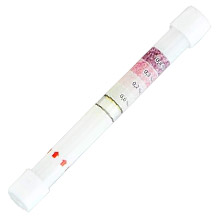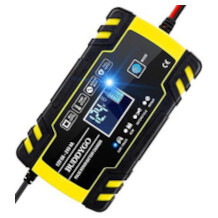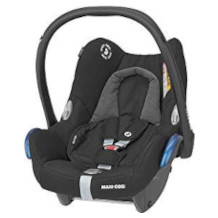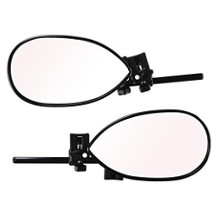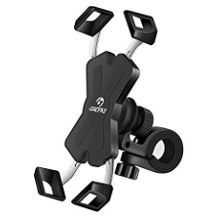Snow chain purchasing advice: how to choose the right product
- What you need to know
- If you often go skiing in the mountains or live there, you should put on snow chains in winter road conditions or at least have them handy.
- In some countries in the EU (such as Austria) snow chains are even compulsory. Violations can result in heavy fines.
- Snow chains significantly increase the grip on roads covered with snow and ice.
- Traction and track chains are functional specializations for the steering and drive axles.
- When buying snow chains, it is particularly important to make sure that they are the right size for the tires.
Safe on the road with snow chains
When winter road conditions at high altitudes, for example in ski resorts, push even winter tires to their limits, it is time to put on snow chains. Not only for reasons of safety or to be able to move forward at all: in some regions of Europe and the USA with popular holiday destinations for skiing, snow chains are compulsory.
Snow chains are usually made of steel and are attached directly on the tires. They are a special driving aid designed for snow-covered or muddy roads. In principle, a distinction must be made between full snow chains and so-called traction aids. When using full snow chains, a net is used that extends over the entire tread of the tire. Depending on how the chains are arranged, a distinction is made between track chains and traction chains. To prevent the wheels from spinning, traction chains run across the tread of the rear tires. Track chains are mounted on the steering axle, largely in the direction of travel. As a result, it is no longer possible for the car to slip sideways as quickly.
Depending on the model and manufacturer, the individual chain links can be made of plastic, hardened steel, or alternative materials. To remove snow from the chain running on the wheel, there are often round loose chain links.
How do snow chains work?
The effect of fitting snow chains is that the vehicle can use a noticeably higher level of grip on wintry roads. Braking distances are also shorter, which is a direct increase in safety. The weight of the vehicle pushes the tires through the snow cover onto the ground, where they immediately have more grip, i.e. traction.
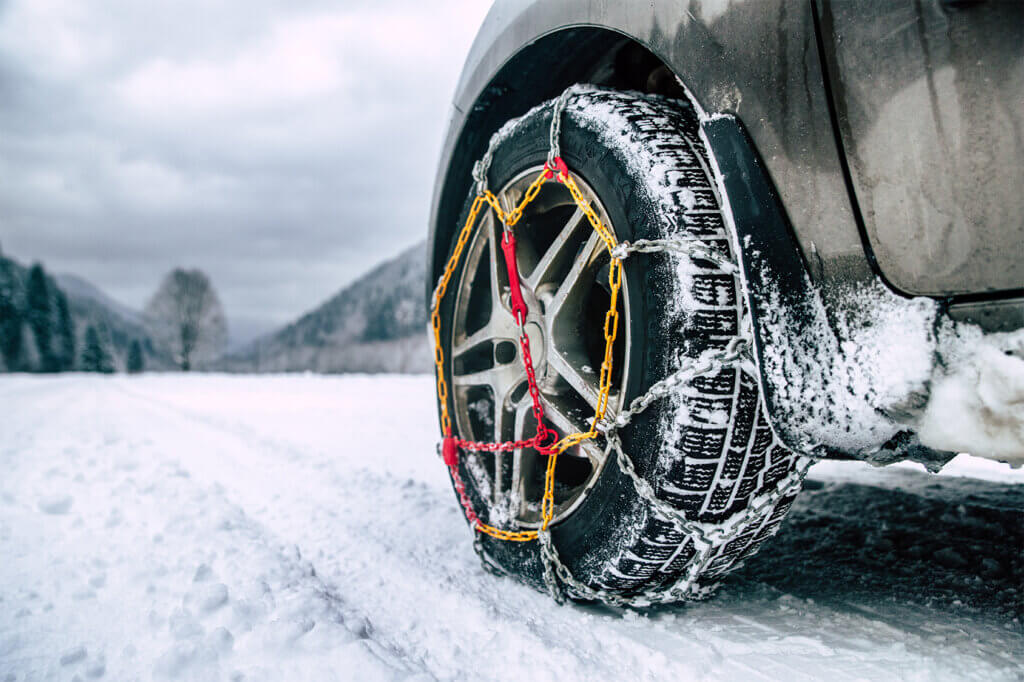
The net on the tread of the tires means that there is less wheel spinning. Figuratively speaking, the individual chain links push themselves between the ground and the rubber like a wedge: this creates the resistance needed to generate propulsion. Without snow chains, the tread of winter tires alone would no longer be able to grip deep snow; moving forward would no longer be possible, especially on inclines. A thick layer of snow, therefore, makes the use of suitable snow chains unavoidable.
Who needs snow chains?
In urban traffic, snow chains are only used on rare occasions limited to extreme weather conditions, especially since at the very least main roads are cleared promptly. However, if you live in the mountains and have to deal with a lot of snow every winter, you should not do without snow chains. The same applies to passionate skiers who drive to winter skiing regions several times a year. If you belong to the target groups mentioned, snow chains will ensure smooth driving.
An overview of the advantages of snow chains:
- Noticeable increase in the traction (grip) of the tires.
- Greater safety due to shorter braking distances.
- Useful or necessary addition for winter tires at high altitudes (ski resorts).
- Vehicle remains more controllable on winter roads.
- Driving off on heavily snow-covered roads remains possible.
- Installation of most snow chains is quite simple.
- With full snow chains, drivers comply with the mandatory requirements in some countries.
- High-quality materials ensure durability.
While the list of safety benefits is long, the use of snow chains can still present the following challenges:
- Lack of flexibility in changing road conditions: chains should be driven a maximum of two miles (3km) without snow.
- Driving is bumpier with snow chains attached.
- On some models, fitting snow chains requires patience and a great deal of dexterity.
- Special protection systems are required for light alloy rims to prevent damage.
The different variants
If you are a motorist who regularly needs snow chains, you will certainly want to check the available range carefully. This is exactly what we want to do in this section, so that we can then move on to the most important purchase criteria in the following paragraph.
Basically, a distinction must be made between full snow chains, traction chains, and track chains. A characteristic feature of full snow chains is that they completely enclose the tread of tires. In terms of function, traction and track chains represent a specialization.
Traction chains provide traction and thus drive on the rear axle. For this purpose, it is necessary that the chain links run transversely to the direction of travel. Traction chains are therefore to be mounted on the drive axle. On vehicles with all-wheel drive, such chains can be used on both axles.
Track chains increase the stability of a vehicle’s driving characteristics by minimizing breakaway. For this purpose, it is necessary that these chains run lengthwise to the direction of travel. Track chains are therefore to be mounted on the steering axle which is almost always in the front.
Why full snow chains are the “safe” choice
In countries or regions where snow chains are officially compulsory, only full snow chains can be considered. From a purely legal point of view, and also from an insurance perspective, traction aids or other aids such as grip sprays or snow socks are not permitted. Compulsory snow chains can be recognized by a blue sign with a white tire in chains in Europe or by a black sign indicating ‘chains required’ or something to this effect in the USA .
If you decide to use a traction or track chain, it is imperative that you mount it on the correct axle, as the chain links are only ever arranged in one direction. It is conceivable, for example, to use a traction chain at the rear for more grip and a track chain at the front for stable steering.
The combination of traction and track chain as an integrated solution
Those who choose a high-performance, full snow chain do not necessarily have to decide for or against one version: most full snow chains are a combination of traction and track chains anyway. The term full is to be understood in the sense that there are chain links in and across the direction of travel. The disadvantage is that, depending on the system, putting on such chains is not exactly easy. A little practice therefore seems necessary in order to be very well prepared for an emergency. The advantage is that these all-rounders can be considered by all drivers who regularly have to drive on snow-covered roads.
Top speed with snow chains on?
Safety is the most important reason for using snow chains. In this respect, the maximum speed limit of 30 mph (50 km/h) should not be exceeded with snow chains on. Since driving can feel bumpier, drivers should get used to it slowly.
An overview: these chain types are available
Rope and ring chains are among the classic models that enjoy great popularity, especially due to their low prices. Putting on these chains requires a little practice so that they can be quickly attached to the tires when needed.
Different designations of snow chains are primarily based on how the individual links are arranged:
- Ladder chains
- Diagonal chains
- Pattern chains
Regardless of which model drivers choose, in terms of grip as a key functional feature, there are only minor differences between all types of snow chains.
Are there alternatives?
In contrast to full snow chains, traction aids cover only part of the tread. They are less suitable for permanent use: traction aids can rather be used if a vehicle is stuck in the snow and can no longer be moved. They might be used to master climbs on snow-covered roads. If you are planning long tours at high altitudes, it is better to just use snow chains.
Those who want to react very flexibly to sudden wintry road conditions can rely on the so-called grip spray. This involves applying a special spray onto the tread which, after a short drying time, provides an increase in the grip level. However, this effect depends very much on the condition of the surface. Moreover, it can only be used for a few miles. So, this alternative is not suitable for long distances. However, drivers can keep it in their glove compartments for emergencies, for example if they have to climb a slope.
Another very modern alternative, especially in Norway, are the so-called snow socks. This is a special cover made of hard polyester fiber that is put over the tire. The surface is permeable, which results in dry friction. Moisture is efficiently wicked away so that the fabric has direct contact with the snow or ice. Due to the high weight of the car, this allows for significantly more propulsion. An advantage is that snow socks are lighter in weight and easier to fit. A major disadvantage, however, is that there is less grip than with full snow chains. For very demanding road conditions at high altitudes, snow socks are rather out of the question.
Snow chains for large and sporty vehicles
Ultimately, only special types of snow chains can be considered for certain types and sizes of vehicles. Since the tires of SUVs are larger, and all-wheel drive is usually standard, special snow chains should be chosen for such vehicles. Due to the higher weight, the chain links in particular must be able to bear greater loads. Special snow chains or protective measures should also be considered for sports and aluminium rims, as the rim could otherwise be damaged.
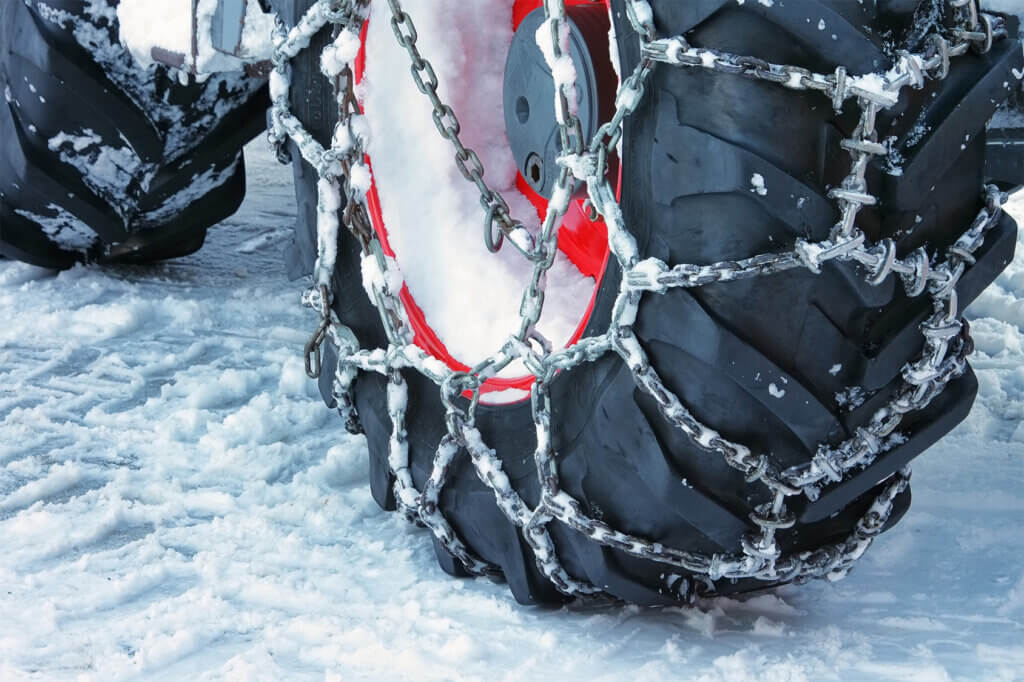
What matters when purchasing
It is important that the snow chain fits the tire size. Only if this criterion is met, can a snow chain be put on easily and lie perfectly on the tread. To buy a suitable snow chain, check the tire size in the vehicle registration document or directly on the tire. Chains that are too large should be avoided at all costs. They can damage the vehicle and, regardless of this, do not provide the desirable additional grip and propulsion.
Rule of thumb for selecting a suitable snow chain
If your entire fist fits between the tire and the wheel arch, all snow chains can usually be considered for your vehicle. If there is less space, a ring chain may be a sensible alternative. SUVs usually offer enough space, so many common snow chains with the appropriate load capacity and size are applicable.
Steel: the best material
Since a snow chain is exposed to high mechanical loads, many experts consider steel to be the most robust solution. Some models also have plastic or textile components. However, the advantage of lower weight often means significantly higher wear. If snow chains are compulsory in the destination area, a steel version is the safest choice in every respect.
The right thickness of chain links
A look at different models shows that the range in terms of link thickness is between 3 and 20mm. For orientation: the thicker the chain links, the more weight they can carry and the higher the grip. Owners of manoeuvrable small cars can use smaller chain links. In general, thicker chain links don’t wear so quickly.
In addition to the chain thickness, the shape also comes into focus when choosing. Chain links are often angular, which improves the grip level by increasing rolling resistance. Some models have round links in the chain. These bring the functional advantage that they don’t stick as much.
Mounting systems: how convenient can it be?
Easy mounting is a key selection criterion for snow chains. Nobody wants to spend hours in the snow, trying to put on snow chains. The space around the wheel arch is decisive for this. In sports cars, there usually is little space, so ring chains or so-called comfort snow chains are an alternative worth considering.
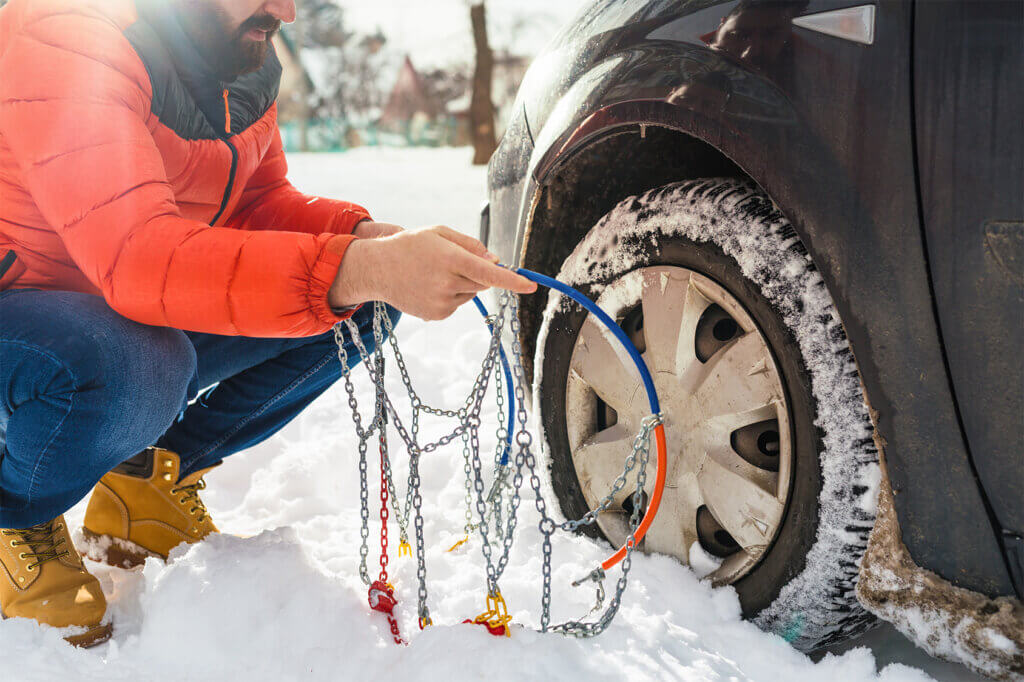
It is important to bear in mind whether the snow chains should be for manual fitting or for auto-tensioning. If you opt for the manual version, you will have to drive a few feet after putting them on and then straighten the chain again. With somewhat more expensive auto-tensioning systems, this second step is usually redundant. Those who don’t want to invest time in fitting snow chains should take a closer look at quick-fit chains. Comfort chains already make fitting easier in that users don’t have to reach behind the tire.
Check approval and standards when choosing
If you regularly drive in areas where snow chains are compulsory, you should pay particular attention to this criterion. Drivers can only comply with the snow chain regulation if the model has the required approval or complies with the applicable road traffic regulations.
Snow chains with rim protection
In recent years, more and more drivers are leaving alloy rims mounted all year round. Conventional snow chain systems can damage sensitive alloy rims. Therefore, special models with integrated rim protection should be considered, especially in the case of mounted light alloy rims. Rim protection essentially consists of preventing the chain from touching the rim by means of special fixing mechanisms.
Tips for use and care
With regard to excessive wear, the maximum speed limit of 30 mph (50 km/h) should not be exceeded. If road conditions change, the question arises as to whether snow chains should be removed immediately in the event of snow- and ice-free sections. If the chains are of high quality, a distance of up to three kilometers can be covered without snow — but no more than that, as the snow chains and the winter tires themselves could suffer massive damage.
To ensure the longevity and stability of the snow chains, they should be thoroughly cleaned with water after each use and then dried. The reason for this is that constant exposure to road salt can lead to considerable material damage. Grease-containing care products do not have to be used in the case of regular cleaning. However, a thin film of oil can be a good option if the snow chains are to be stored in a dry place after the winter for the next season.
Tips for using snow chains
If you attach the chains a little looser, you can increase their service life. However, a tight fit is necessary for a noticeable grip effect, especially on icy roads.
It is not only the fitting of snow chains that needs to be practised. Drivers should also get used to the driving experience slowly. Many describe it as bumpy. And the admissible speed of up to 30 mph (50 km/h) on winter roads should not be underestimated in this context. Braking distances naturally increase on slippery surfaces, so always drive with foresight.
Especially in the case of very modern vehicles, it is important to consider the effect of snow chains on electronic driving aids. Statements on this should also be checked in the enclosed operating instructions, which should contain instructions for proper fitting among other things.
Snow chains and electronic stability programs
Quite a few experts recommend switching off ESP (also called ESC or DSC) whenever possible when using snow chains. If this electronic stability control is active, its intervention can interfere with the optimal performance of the snow chains. After removal, think about reactivating ESP to take advantage of optimal driving characteristics in ‘normal’ winter road conditions.
Image 1: © Jaroslav Moravcik / stock.adobe.com | Image 2: © LianeM/ stock.adobe.com | Image 3: © cherryandbees / stock.adobe.com

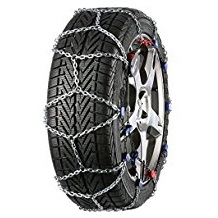
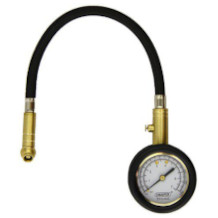
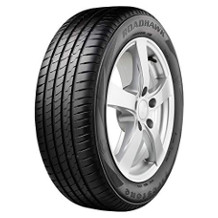
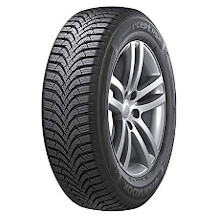
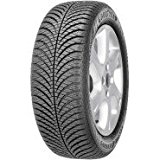

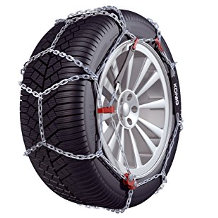
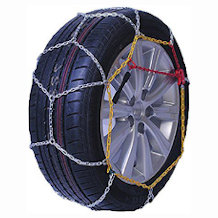
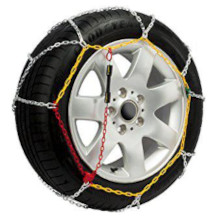
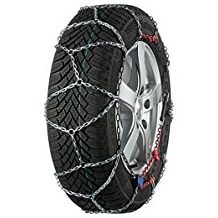
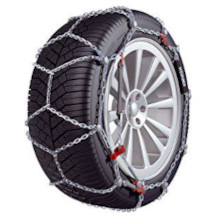


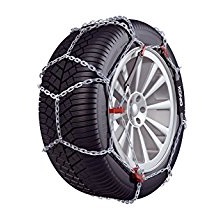
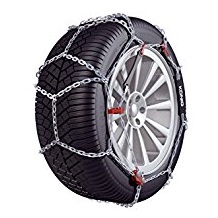
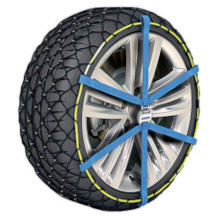




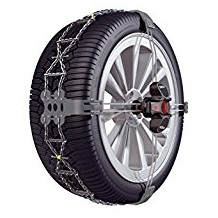
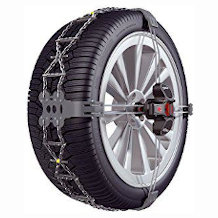

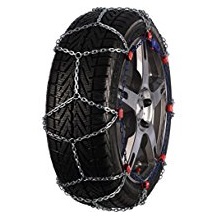







 1,275 reviews
1,275 reviews
